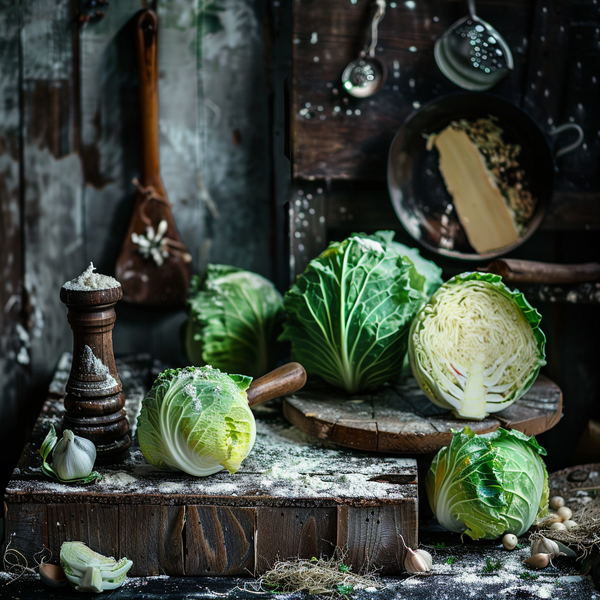
Cabbage
Cabbage, a versatile and nutritious vegetable, is used in various culinary traditions around the world. Its mild, sweet to peppery flavor allows it to be incorporated into a wide range of dishes. Here’s how cabbage is commonly used in cooking:
Raw in Salads: Thinly sliced or shredded cabbage is a crunchy, fresh addition to salads. It's a key ingredient in coleslaw, mixed with a mayo or vinegar-based dressing.
Stir-Fried: Cabbage can be quickly stir-fried, often with other vegetables, garlic, and soy sauce. It retains some of its crunch and gains a sweet, caramelized flavor.
Stuffed Cabbage Rolls: A popular dish in many cultures, cabbage leaves are blanched to make them pliable, then stuffed with a mixture of meat, rice, and spices, and cooked in tomato sauce or broth.
Sauerkraut and Fermented Dishes: Cabbage is fermented to make sauerkraut, a dish with probiotic benefits, commonly used as a side dish or topping in German and Eastern European cuisines.
Soups and Stews: Cabbage adds bulk and sweetness to soups and stews. It’s featured in dishes like the Irish colcannon, Russian borscht, and Portuguese caldo verde.
Grilled or Roasted: When grilled or roasted, cabbage wedges become tender and take on a smoky, sweet flavor that's excellent as a side dish.
Steamed: Steamed cabbage is a simple, healthy side dish that can be seasoned with butter, salt, and pepper or mixed with other steamed vegetables.
Pickled: Besides sauerkraut, cabbage can be quick-pickled or used in kimchi, a spicy, fermented Korean side dish with a complex flavor.
Braised: Braising cabbage slowly in a seasoned broth or wine renders it meltingly tender, often paired with meats like pork or sausages.
As Wraps: Large cabbage leaves can be used as a low-carb alternative to wraps or tortillas, filled with various fillings like grilled meats, rice, and vegetables.
In Slaws: Beyond traditional coleslaw, cabbage can be used in a variety of slaw recipes that include other vegetables and fruit, dressed in vinaigrettes or creamy dressings.
Cabbage is available in several varieties, including green, red, savoy, and napa, each with its texture and flavor nuances. This diversity makes cabbage a highly adaptable ingredient, capable of being the star of a dish or playing a supporting role in salads, side dishes, and main courses.
Nutritional Information
carbohydrates
5.58 g
fats
0.12 g
protein
1.44 g
calories
24